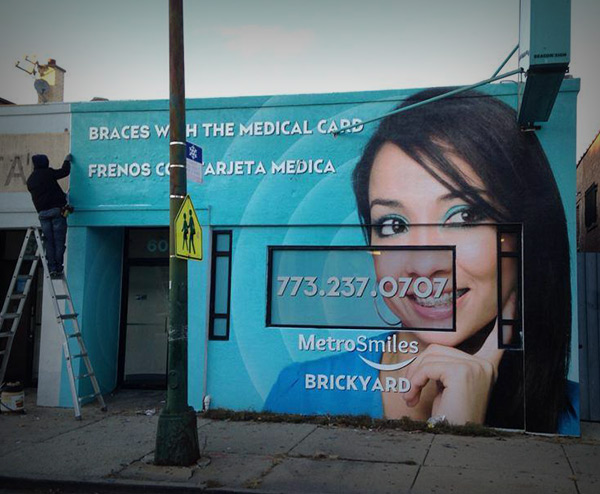The aim of this article is to document every conceivable type of black that is destined for print and web. It is my aim that if you are a designer, you can find some information here that you didn’t know―and if you are learning about design, I hope you can educate yourself from this post…

There are 3 Parts in the article:
One: The Different Blacks
Two: Using Black
Three: Misuse of Black
Note: Some of the examples I have used in the article are not accurate color-representations, as the images refer to CMYK color-tones for print. Some colors are exaggerated to clearly show what kind of tint certain blacks pertain, and are only present to indicate color variations, not perfect representation.
In this article I will be using the USA spelling of ‘color‘, as opposed to colour.
Part One: The Different Blacks

RGB Black | R/0 G/0 B/0 : This black represents zero RGB light―and therefore ‘black’. For more information on the properties of the RGB additive color model, visit this WikiPedia Article.
When to use: For all on-screen, web and online PDF use. Variations are sometimes used (for example R/5 G/5 B/5), but differing end-user screens makes this practice futile unless a major shift of color is required; and therefore, the color black would be subjective.


PhotoShop® Black | C86 M85 Y79 K100 : This type of black is roughly comprised by the preceding color combination, but can vary slightly between document profiles and PS version number (some versions produce black at around (90%).
When to use: This is the default PhotoShop® Black. The total ink coverage exceeds the TIC limit of 260-320% (depending on paper stock and printing process), although the total ink coverage can be automatically amended with GCR (Grey Component Replacement) and UCR (Under Color Removal) at the printers.


Neutral Rich Black (also known as Rich Black) | C40 M30 Y30 K100 : This type of black is roughly comprised by the preceding color combination, but varies between designers’ personal preference.
When to use: There are plenty of variants in this colour mix. This is a very general, rich black that doesn’t exceed a 200% TAC (Total Ink Coverage) limit.


Registration Black | C100 M100 Y100 K100 : This mix is comprised of the maximum amount of cyan, magenta, yellow and black.
When to use: Generally, this color is only to be used for registration marks on documents to be sent to the printers. The only exception to this is if a file containing registration black is to be digitally printed (at home or professionally) as toner is used, not wet-ink.


Flat Black | C0 M0 Y0 K100 : This black is just made up of 100% of the black channel, with no other ink in the mix. Also known as Standard black.
When to use: Looking very ‘washed-out’, this black is best used just for small text in magazines and books, and in particular, newsprint where TAC limits are are set to very low tolerance’s.


Designer Black | C70 M50 Y30 K100 : This black is just made up to a TAC equating to 250%
When to use: Probably the most commonly type of black used. Many designers have their favourite mix―and for different papers and printers. This is a very general, rich and punchy black that will suit almost any application.


Pantone® Process Black | Spot-Color/’K100′ : This black is available as Pantone® Process Black C (coated), U, (Uncoated) and M (Matt).
When to use: Being one of the ‘four CMYK colors‘, this black is ideally suited to printing text, whereby correct registration is not an issue.


Cool Black (also known as Black Bump) | C50 M0 Y0 K100 : This is the general-mix, but this black can also be comprised [typically] of between 20%-80% cyan.
When to use: Normally, this type of black is used when a very cold-feeling shine/glaze is required. For example, it would be appropriate on posters containing large areas of black, whereby the purpose is to advise elderly people on an impending flu-epidemic. The bluish-tone would add an almost-subliminal dimension to the design.


Golden Black | C0 M0 Y60 K100 : This is the general-mix, but this black can also be comprised [typically] of between 20%-80% yellow.
When to use: Normally, this type of black can be used when a very warm/earthy feeling shine/glaze is required in a design. For example, this could be used on a ‘Global Warming’ advertisement, etc.


Warm Black | C0 M60 Y0 K100 : This is the general-mix, but this black can also be comprised [typically] of between 20%-80% magenta.
When to use: This type of color would be great if used on a brochure for a jewellery company, etc.


Pantone® Black | Spot-Color : This black is available as Pantone® Black C (coated), U, (Uncoated) and M (Matt).
When to use: Ideally, this is used for example, on business cards and letterheads, whereby only a certain amount of spot colors are used instead of the expense of CMYK. Another great use is in Duo-tone images.


Pantone® Hexachrome® Black | Part of the CMYKOG process range (cyan, magenta, yellow, black, orange & green), : This black is available as Pantone® Black C (coated), U, (Uncoated) and M (Matt).
When to use: It would be pretty pointless using this black on its own, as it has been developed to be used within the Hexachrome® color range (a set of six colors that produce vivid, bright prints).


Pantone® Black 2, 3, 4, 5, 6 & 7 (range) | Spot-Colors : These blacks are available as Pantone® Black C (coated), U, (Uncoated) and M (Matt).
When to use: This range of blacks really start to depart from the standard perception of a ‘standard black’. The color-tints in the range are quite prominent, mimicking in many ways cool, rich and ruby black, etc, but in a single spot-color. Use instead of a similar CMKY black to save money or printing costs.


Metal FX® Black | [Specialty] Spot-Color : This black is part of a set of metallic-colors that are special color inks printed onto a pre-printed metallic base.
When to use: If you want a very eye-catching design―and have a larger printing budget (printing costs are often about +40% of typical CMYK), the Metal FX® printing process may be a great option, but complicated file setups are required―and printers offering this option are few and far between.


Trumatch® Black | Based on the CMYK color-space. Available in Coated and Uncoated swatchbooks.
When to use: If you want more accurate matching of spot colors when converting to CMYK, Trumatch® may be more appropriate than Pantone® colors. However, in the case of just utilizing black, there is little valid reason to use beyond a consistent color work-flow. Read this article for more information.

Toyo® Black | Very similar to Pantone® Black (and the whole Toyo® color system).
When to use: This color matching system is mainly popular in Japan, so you may use it if you design in this country―or maybe if you are designing material that is to be printed there.

Dainippon®: Ink & Chemical (DIC) [Black] | Just like Pantone®, the DIC colors are a spot-based matching system.
When to use: This color matching system and inks are used for use on packaging, coatings, plastics and synthetic resins and related products, amongst other specialized uses.

ANPA® Ink [Black] | Colour matching system based on the LAB color space. These inks were originally made from soybean oil.
When to use: This color black is to be used on newsprint. For more information, visit the Newspaper Association of America website.

HKS® Ink [Black] (88 Z) | Spot-Color : Just like Pantone®, the HKS® colors are a spot-based matching system.
When to use: This color model is used in Europe and Germany, with the inks being used for design on certain plastics for industrial printing processes.

Focaltone® Black (1073) | Spot-Color : Like Trumatch®, this is a color model that is based on the CMYK color space.
When to use: The Focaltone® system can be used for computer system color calibration, whereby Focaltone® black, for example, would be made up a CMYK tints. For more information, visit the FocalTone site.
Note: To save this post becoming repetitive on certain information, I have excluded some libraries available, such as Pantone® Pastel & Solid Colors and Visibone.
Part Two: Using Black

Printing Pantone® Black (or any other Spot-Black) Twice | Spot-Color : The printing of any given spot color twice over (also known as ‘hitting it twice’).
When to use: If for example, a special paper is to be used for a business card design, a designer may specify a Pantone® Black to be used on 2 separate printing plates. The end result is a super rich black normally only achieved utilizing CMYK―but at a lower cost.


Image Copyright: Surface Media
UV Spot Varnish / High-Build UV SV | This varnish is applied to certain areas of the design, highlighting and drawing attention to selected areas. Other similar coatings include Matt Varnish, Crystal Protective Coatings, Gloss and Matt Laminates and StopLight Coatings. There is a more comprehensive list of finishes at Gemini Press.
When to use: If you have a certain desired effect you want to achieve, like when used on the black-styled design above, this varnish can look professional and classy. It costs extra, of course, but if it’s used just with black, for example, it may cost less than CMYK depending on the printers used.
Note: There are other finishes available can be applied to black, such as Embossing, Debossing and Foil-blocking, but wring of these methods would stray from the context of this article.


‘Knock-out Black’ | C40 M40 Y40 K100 : A process whereby text or forms are knocked-out of the black channel (and therefor, printing plate), but the cyan, magenta and yellow channels are either solid or filled to a certain extent (for example, gradients applied).
When to use: This technique is great for subtle printing effects, where special spot varnishes are either not available or not in the printing budget. For example, I once used thus technique on a CD Cover, where I knocked-out the band’s logo on the tray-card reverse.

The image above shows how the four CMYK channels look. As can be seen, the letters are subtracted from all but the black channel, so the word appears ‘less-black’ than the surrounding black, and therefore legible.
This technique has endless possibilities. For example, the surrounding black could be made as a Flat Black, with the text in Rich-Black. Shapes, forms and images can also be tailored to this technique, as well as the use of different spot-colors and metallic inks.
Part Three: Misuse of Black

Base Image: Dreamstime
Black Border Misuse: Yeah, maybe she’s looks shocked because of that drab-’flat’ border―a common mistake made when using photography in vector-based files (Adobe Illustrator and InDesign, etc) is not matching black borders to the black contained in the files. For example (taken from above), the CMYK makeup of number 1 maybe a Neutral Rich Black, but the border (2) may be a Flat Black. This, of course, may be desired in some situations, but for the most part it is a printing mistake.
Advice: T0 make sure this doesn’t happen, use the eyedropper tool in your chosen Adobe application to measure the CMYK values of the outer-photo black and match the border accordingly.


Base Image: Dreamstime
Overprint Misuse: I would always recommend overprinting black, especially where a black-filled-vector shape is on top of a vivid image. I have found that oranges and greens are particularly prone showing through flat blacks, so don’t ever overprint flat black onto an image unless you want to image to show through.
Advice: When overprinting black onto such an image (well, any image), always use a black, such as designer black, whereby all four CMYK colours are used. Exactly how much of the percentage of these colors you use is dependent on what stock your design is to be printed on.


Small Black Logo/Text Misuse: You wouldn’t believe the amount of ‘professionally-designed’ CD Covers I’ve seen over the years that are inclusive of small black logos that are made up of a rich CMYK black. If you take a look at the logo I have created above, you can see which one is clear and clean cut. There no trying to convince you otherwise. Just imagine if my “AK Doesn’t Make Mistakes“ [spoof] logo was a maximum 8mm in height? You can see why this is an issue of legibility. This is also true of small black text, etc.
Advice: Always check that small black logos only appear on the black channel by proofing your work. Set black to overprint, unless it lies on a dark background…but this may make the logo or text illegible anyway, so use common sense.
Source: www.andrewkelsall.com





